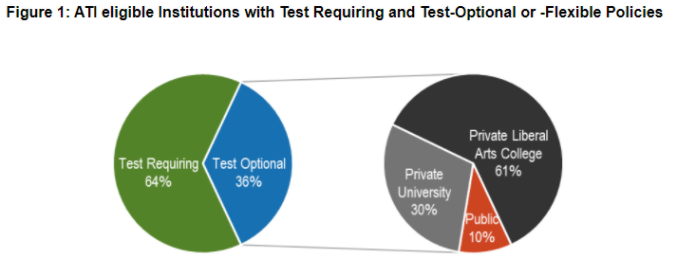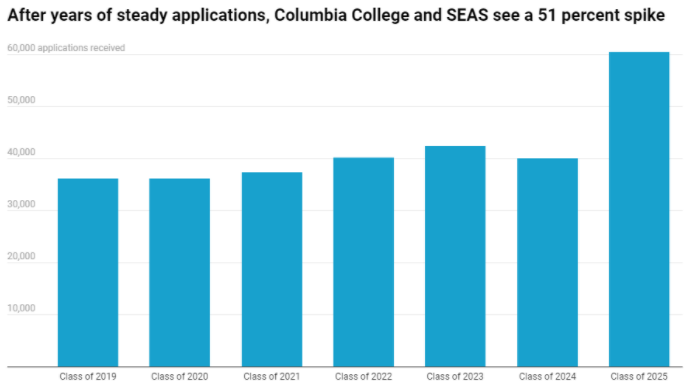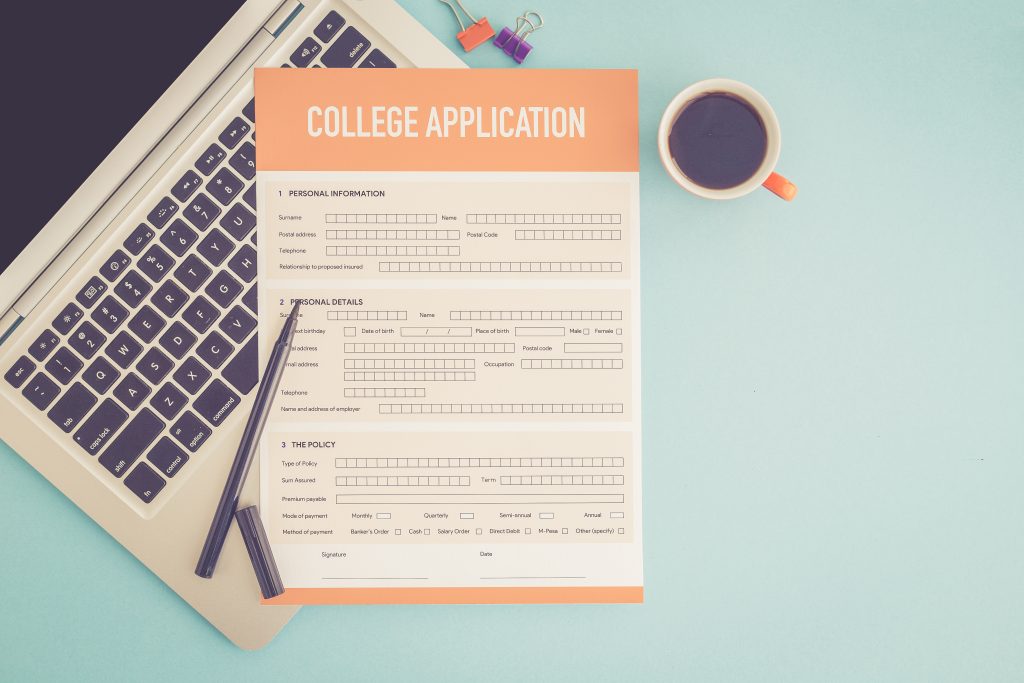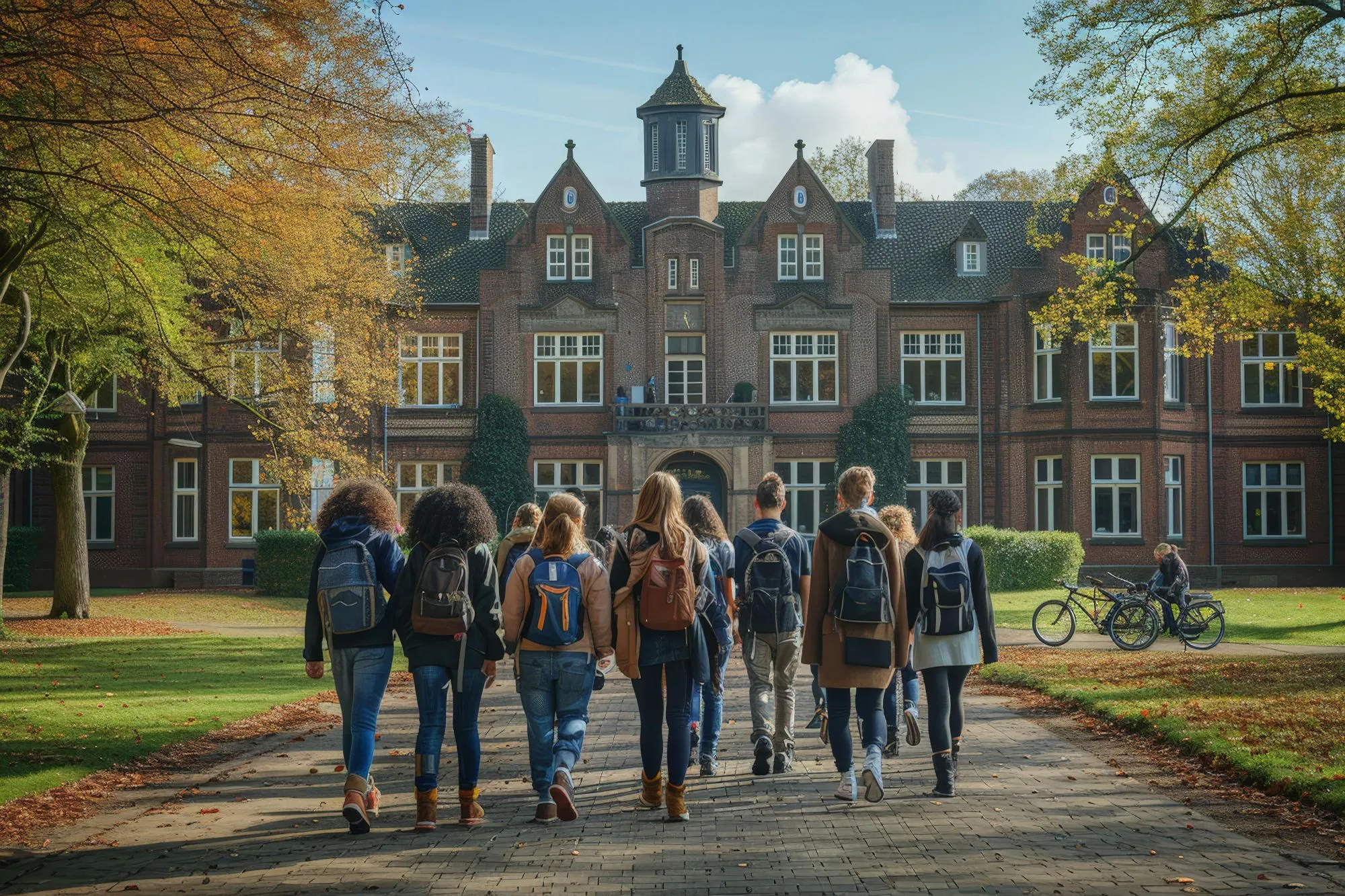Congratulations to all our Class of 2021 students on their college acceptances! This year has been a truly challenging one for students everywhere. Many colleges extended application deadlines, some added a new deadline, many (if not all) went test-optional, and decisions were often delayed this year. Now that we’ve wrapped up the final round of application decisions and students are now considering which school they want to accept the offer from, we would like to take this time to reflect on the changes and trends we saw during this college application cycle. There are 3 major ones we’ll cover:
- Test-Optional
- Application Numbers
- College Fit
1. Test-Optional
Fundamentally, Test-Optional means that students can decide whether or not to submit their test scores (SAT and/or ACT) to a school. Students who chose NOT to send their scores would not have their lack of scores counted against them. Before the pandemic, the vast majority of schools required standardized test scores.

Students who performed poorly on their exams were often discouraged from applying to higher-ranking (prestigious) schools, even if they were at the top of their graduating classes. With the pandemic came the mass cancellations of multiple exam dates and the official switch for many colleges to adopt a truly test-optional policy. This resulted in more students applying to schools that would be “reach” or “far reach” for them, especially due to their standardized tests. The 2020-2021 application cycle also saw an increase in Black, Latinx, and Native American students (29% of accepted students, representing an increase of 27% from previous years).
In the coming application cycle (2021-2022), we can expect many schools to keep the same test-optional policy, with some even moving to a more permanent test-optional policy and making it more the norm than the exception.
2. Application Numbers
A consequence of the test-optional policy (along with increased online recruiting efforts) is that there have been some record-breaking increases in applicants to many of the Top 50 universities and liberal arts colleges.
| College | Incoming Spots (approx.) | 2020 Applicant Pool (total) | 2021 Applicant Pool (total) | Notes |
|---|---|---|---|---|
| Amherst College | 400 | 10,603 | 14,787 | ED acceptance rate dropped from 32% to 25% from 2020 to 2021 |
| Boston University | 3,200 | 62,224 | 75,733 | |
| Brown University | 1,600 | 38,674 | 46,568 | This was Brown’s largest applicant pool and applicant increase to date (8K increase) |
| Colgate University | 800 | 8,582 | 17,392 | Applicant pool doubled within a year. The acceptance rate decreased from 27% to 17%. 2021 represented the most competitive pool in the school’s history |
| Columbia | 1,400 | 40,084 | 60,548 | 2021 Acceptance Rate dropped to a record low of 3.7% acceptance after seeing a 51% spike in applicants |
| Cornell | 3,200 | 51,500 | 67,000 | |
| Harvard | 1,600 | 40,248 | 57,000 | 10,000+ applied EA with only 747 acceptances (record low EA acceptance rate of 7.4%). 2020 saw 6,424 EA applicants (accepted 895). EA acceptance rate for previous years was about 13% |
| NYU | 6,700 | 80,261 | 100,131 (all campuses) | 2021 saw an acceptance rate of 12.8%. There was also an increase in Black/African American, Latinx, Native American, and international applicants |
| Northeastern | 3,000 | 64,428 | 75,233 |

Generally, applicant pools fluctuate by about 2,000 students depending on the school’s popularity, size, and current events. However, during the 2020-2021 application cycle, many top schools saw applicant pool increases of at least 5,000, with many seeing increases of 10,000 students. Georgia Tech also saw a change in their applicant pool with the introduction of EA1 for in-state students and EA2 for out-of-state and international students (15% increase in Georgian applicants). EA1 students saw a 38% acceptance rate while EA2 students saw a 14% acceptance rate.
With the continued trend towards test-optional policies, what does this mean for 2022 and other future applicants?
3. College Fit Matters More Now Than Ever Before
This year we saw some surprising, delightful, and exciting acceptances, including students being accepted to their “far reach” schools. With colleges receiving so many applications from very well-qualified students, they are paying more attention to how a student would fit into their community. Colleges are looking at values, activities, impact, and contributions more. It’s not enough to be a top student (especially when at least a quarter of the other applicants are also top students in their respective schools).
What can students do to keep competitive and show a good community fit?
- Attend tours, information sessions, workshops, and forums to get more information about the school. Remember with schools offering more online informational opportunities, there’s less of an excuse for not attending a tour or workshop.
- Reach out to your regional admissions officers to discuss your interest in the school with them and find out what kind of student they’re looking for (schools will have values they want to keep in mind, but they may be looking to increase certain demographics or backgrounds).
- Make sure you actively research the schools you’re applying to (program specifics, opportunities, extracurriculars, experiences, etc.). Consider more than the overall ranking of a school. Think about how you and a specific program are a good fit for each other and what you hope to accomplish in the program.
- Use your activities and supplemental essays to share information about how you will fit in with their community and/or how you and the school have aligning values.
- ED (and ED2) can be your ally for many schools to increase your acceptance chances.
Finally, remember that getting a rejection from a school, no matter if it’s your dream school or safety school, isn’t necessarily a reflection of your academic ability. Rather, admissions teams are looking to build a certain community and are looking to see how you would contribute and fit into their vision. The schools who accepted you are the ones who think you’ll flourish in their campus community and can’t wait to see how you’ll brighten it with your presence. At the end of your application cycle, focus less on the what-ifs for application rejections and more on the schools who said, “Welcome and Congratulations!”. Because come May 1st, it’s your turn to be the admissions officer. Who will you ultimately accept?
 中文
中文 Tiếng Việt
Tiếng Việt




